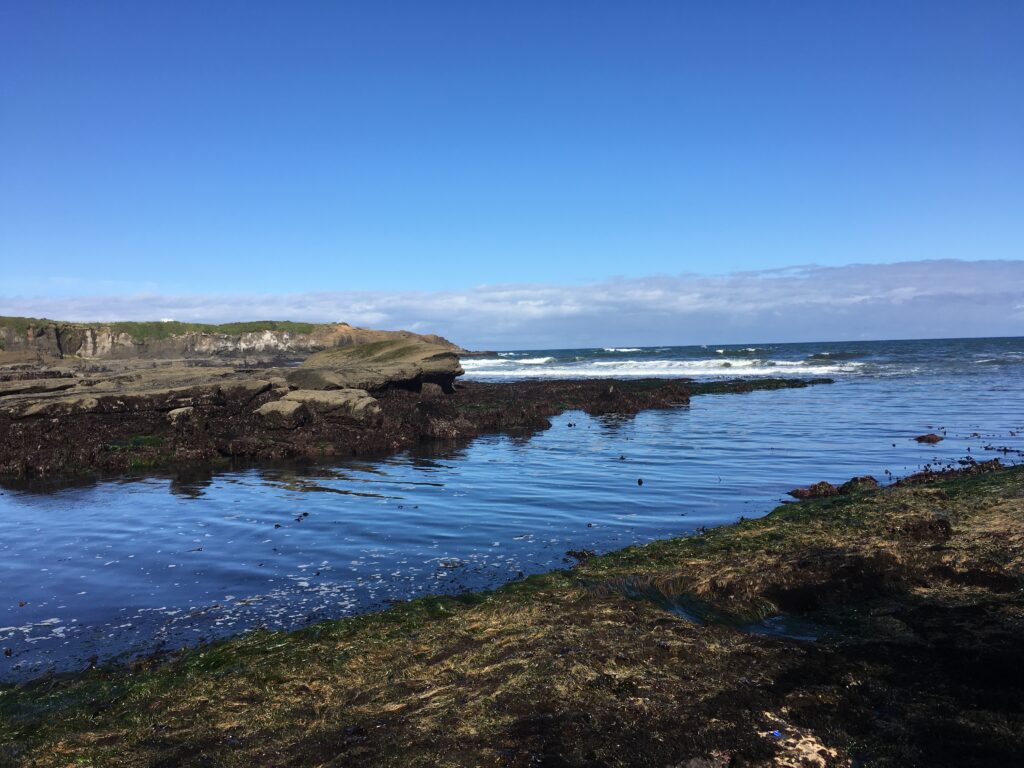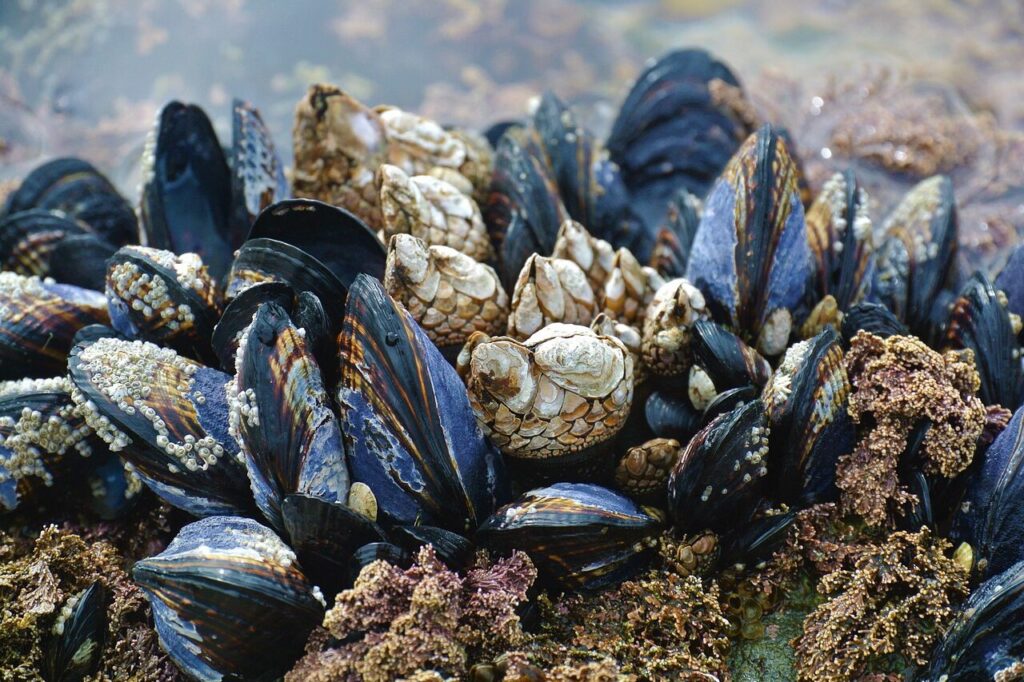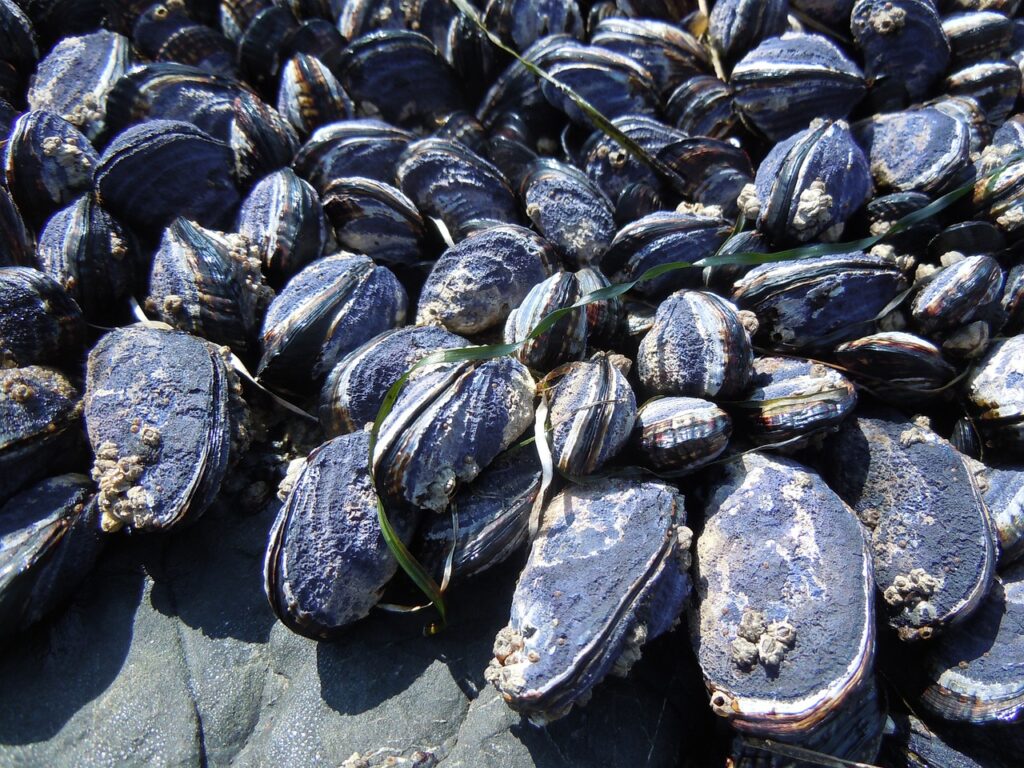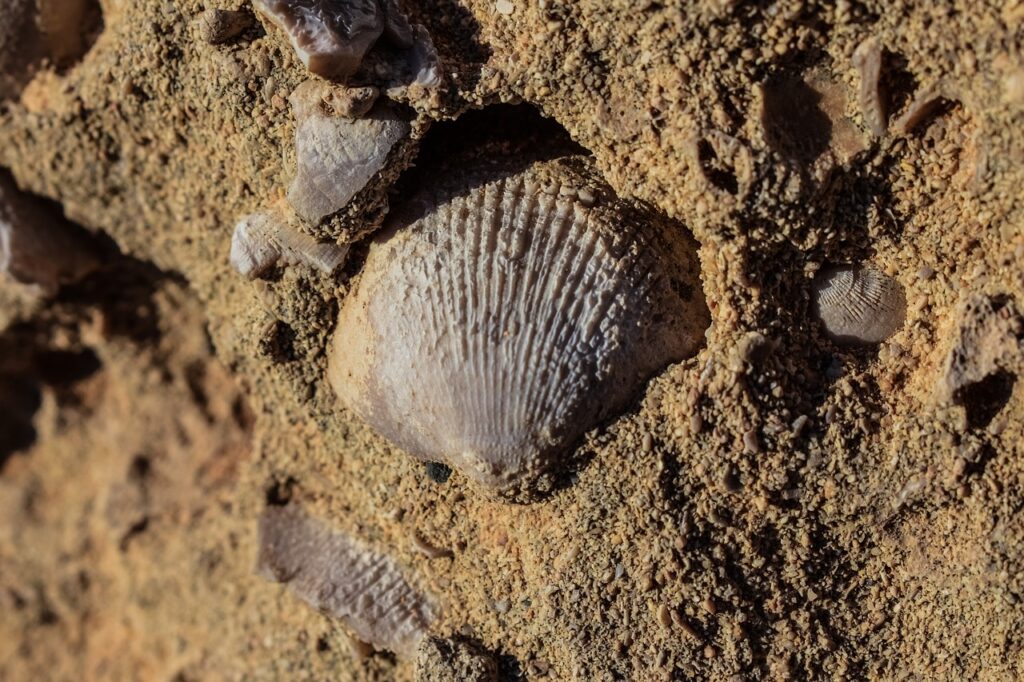
Research Themes
-
- Documenting anthropogenic impacts on mollusc calcification
-
- Interpreting molluscan shells as records of Holocene environments
-
- Understanding environmental and biological controls on mollusc biomineralization
All of these themes are focused on ecologically, economically, and/or culturally significant mollusc species (e.g., edible clams, mussels, oysters)

Research Questions
-
- What is the relationship between the environment and shell characteristics in a particular mollusc species?
-
- How have shell characteristics changed through time in response to environmental and climatic changes? Over what scales?
-
- What are the spatial and temporal scales of changing shell characteristics?
-
- How do shell characteristics respond to and record biological and environmental signals?

Research Methods
-
- Optical microscopy
-
- Statistical data-synthesis methods (RStudio)
-
- Morphological measurements
-
- Scanning electron microscopy (SEM)
-
- Geochemical analysis (stable isotopes, trace elemental ratios)

Research Policies
The ideal ShArE lab member is interested in shells, coastal environments, and/or climate change in the past or present. We also value a commitment to ethical science (e.g., minimally invasive methods, fieldwork only when necessary, community partnerships whenever possible). This means that fieldwork is an exception, not the norm, in the ShArE Lab. We draw from existing datasets or museum collections rather than conducting extractive or invasive fieldwork. The ShArE lab strives to provide an inclusive environment for aspiring scientists of any background, race/ethnicity, sexual orientation, gender, or dis/ability.
Interested in joining the ShArE Lab? Check out this info page and fill out the interest form if you’d like to pursue a spot in the lab!
Recent Publications
Vriesman, V.P.,Bean, J.R., Palmer, H.M., Banker, R.M.W., 2024. Interpreting life-history traits, seasonal cycles, and coastal climate from an intertidal mussel species: Insights from 9000 years of synthesized stable isotope data. PLOS One, https://doi.org/10.1371/journal.pone.0302945
Palmer, H.M., Vriesman, V.P., Livsey, C.M., Fish, C.R. and Hill, T.M., 2023. Holocene climate and oceanography of the coastal Western United States and California Current System. Climate of the Past, https://cp.copernicus.org/articles/19/199/2023/
Vriesman, V.P., Carlson, S.J. and Hill, T.M., 2022. Investigating controls of shell growth features in a foundation bivalve species: seasonal trends and decadal changes in the California mussel. Biogeosciences, 19(2), pp.329-346. https://doi.org/10.5194/bg-19-329-2022
Palmer, H.M., Padilla Vriesman, V., Banker, R.M. and Bean, J.R., 2022. Compilation of a database of Holocene nearshore marine mollusk shell geochemistry from the California Current System. Earth System Science Data, 14(4), pp.1695-1705. https://essd.copernicus.org/articles/14/1695/2022/
Vriesman, V.P., 2022. Bivalve Biomineralization in a Changing Climate: Investigating Marine Mussel Calcification Patterns over Seasons to Millennia (Doctoral dissertation, UC Davis). Portions available upon request.